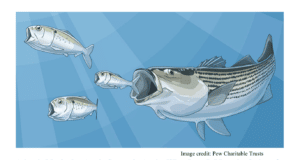You’d think after the second time it happened, he would have wised up. But no.
Michael Hackenberger, director of the Bowmanville Zoo near Toronto, Canada, was tending one of the zoo’s elephants when the animal snatched Hackenberger’s hat off his head and ate it. Indigestible and undaunted, the hat continued its merry way through the elephant’s intestinal tract, and much to Hackenberger’s surprise, it plopped onto the ground a couple days later. Although the hat was in desperate need of a good scrubbing, it survived the journey otherwise unscathed. This happened 20 years ago, not once but three times with this particular elephant. After each episode, Hackenberger retrieved his adventurous chapeau and cleaned it. He continued to wear the hat until he met a homeless woman whom he thought deserved it more than he, so he donated it to her. Truly a gentleman.
This hat, by the way, was the creation of another Canadian, Alex Tilley, who’s responsible for his namesake, the Tilley Hat, which has become the official headgear of sailing kooks and snobs around the world. You’ve probably noticed a Tilley Hat whenever you’re forced to maneuver around a hapless sailing vessel. It’s the white floppy thing that looks like a dead seagull and is being waved frantically at you by the seahogging ragbagger you’re passing. No doubt he’s demanding that you slow down to something less than 5 mph, lest his tender bottom be upset.
Anyway, Tilley, who’s an avid sailor, was tired of losing his headgear while at sea, and in 1980 he vowed to design something better. He found a hatmaker in Toronto who produced samples of his idea, which Tilley took on a voyage to Belize with his wife and two daughters. Just like the crazy elephant, the wind plucked off his hat, and the sea ate it.
Back to the drawing board, Tilley added an adjustable chin strap to his design plus a long shoelace, or “wind cord,” in the back to help keep the hat on its wearer’s head while underway. The hat’s crown not only had pockets, but also a layer of foam sewn inside so the hat could float. The cotton fabric was strong and water repellent. Tilley’s goal, in his words, was to make “a proper sailing hat [that could] float, stay on, be unshrinkable, last indefinitely, and look attractive.” And he did it, well, sort of…except for the last part.
The $15.95 retail price barely covered its manufacturing cost. Selling the hats from his home, 42-year-old Tilley figured he might profit “an extra $5,000 a year.” Not quite. Today his original model T3 Tilley Hat (above) retails for $55, and after more than 25 years, his company, Tilley Endurables (www.tilley.com), annually sells more than a quarter-million hats in more than 17 countries. Although hats remain his company’s most popular product, Tilley also manufactures and sells socks, underwear, vests, pants, shirts, shorts, even “formal wear” for travelers.
The company has received many letters and testimonials (see below) from satisfied customers. Reportedly, there’s a secret file of photographs of some free-spirited customers who photographed themselves in far-flung locales wearing their Tilley Hats – and nothing else. Also, the Canadian armed forces were issued the hats during the Gulf War, but they objected to their white color, so to dye them darker the troops simply dipped the hats in coffee.
Okay, maybe not every owner of a Tilley Hat is a certifiable, navel-gazing sailor boy or girl, but even if he or she is, perhaps it’s wrong of us to blame the hat. After all, the Tilley Hat is a uniquely Canadian tribute of substance over style that’s so exaggerated, it’s celebrated. And maybe we can even declare a truce with our snailboating friends – as long as they quit waving their damn hats at us.
Stranger in a Strange Land ” During a recent trip to Tanzania I encountered a local gentleman who approached me wearing a Tilley Hat, but upside-down on his head. When I suggested to him that it might be better the other way up, he replied, ‘But my dear fellow, I’m not wearing it. I’m carrying it.’ “









